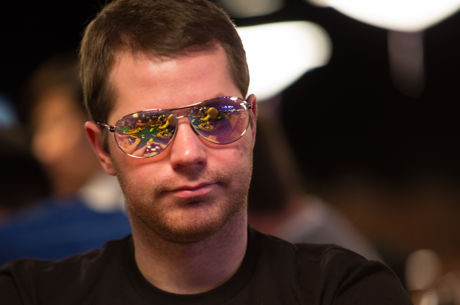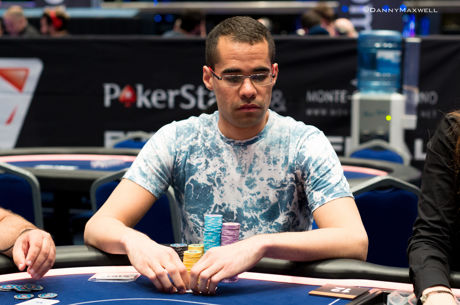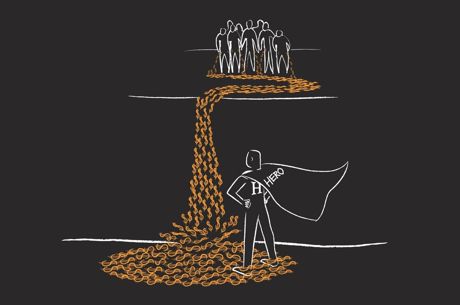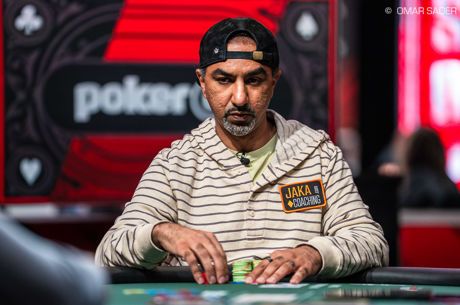10 Multi-Table Tournament Tips: Strategy on the Bubble

Table Of Contents
When it comes to multi-table tournament strategy, the bubble �� that is, when there are only a few eliminations or perhaps even just one until the money is reached �� is probably the single most discussed phase of tournaments. That might seem disproportionate, especially when you think of how the bubble presents situations and decisions that can be entirely unique when compared to every other stage of an MTT.
Players do things on the bubble they don't do at any other stage of the tournament. Some become ultra-tight, open-folding monsters with short stacks. Others turn ultra-loose, open-raising eight hands in row �� something that almost never happens at other points in MTTs.
Then again, successfully surviving money bubble means crossing that line that divides cashers and non-cashers, and only those who do make it through have a chance at the bigger prizes awaiting those making the final table and the eventual winner. You could say that unlike any other time before or after, when the tournament is on the bubble the entire prize pool is at "stake."
It makes sense, then, that so much attention has been given to bubble strategy. It's a stage when a mistake can be especially detrimental, either greatly lessening your chances of making a significant profit or causing you to miss the money altogether.
By the "bubble" we're referring in a general sense to the stage of the tournament when everyone is more or less aware of the fact that the next knockout (or next few) will mean reaching the cash. In huge MTTs with hundreds or even thousands of players, the "bubble" can be lengthy and start when there are still tables' worth of players left to bust. Meanwhile in a small 40-person tournament, the "bubble" may only really come into play when down to that last knockout before the cash.
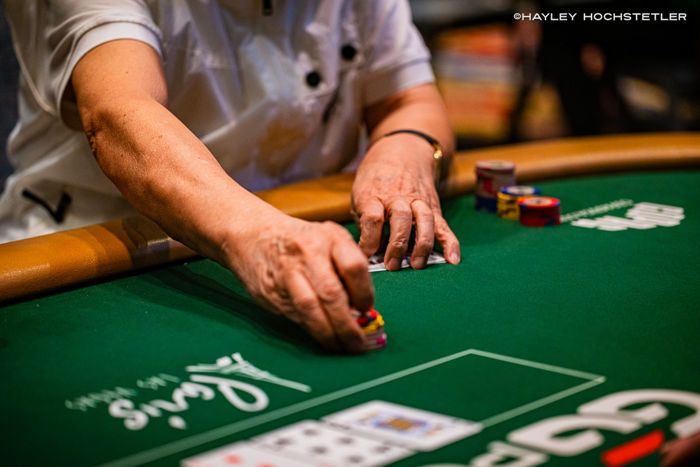
How to Play the Bubble
For our purposes, we're dividing our "Bubble Play" tip into three primary guidelines, each of which has its own particulars to consider.
1. Distinguish "players" from "non-players"
You're already doing a good job of recognizing your opponents' styles and watching how they play even after you've folded hands. Once the bubble has finally arrived, try to establish who among those at your table continue to be "players" getting involved at roughly the same frequency (or a little less) than before, and who has more obviously become much tighter with their starting hand selection, clearly content to try to make the money without adding further to their stacks.
Obviously those who are shortest on chips are somewhat exempt from this categorization �� if they're mindful of their situation, they'll necessarily tighten up until they pick up a hand worth shoving. But watch the big and medium stacks who still have more options available to them than just to push or fold. Especially note those who have stopped opening pots from late position when it folds to them and/or aren't defending their blinds.
While stack sizes are important (see #2 below), be more willing to pressure these "non-players" with preflop opens, raises or three-bets from position when they do come in, and postflop continuation bets if hands get that far. Meanwhile exercise caution with the "players" who appear less affected by the approaching bubble, recognizing they aren't going to be as willing to give up on pots even when they don't have the strongest of holdings.
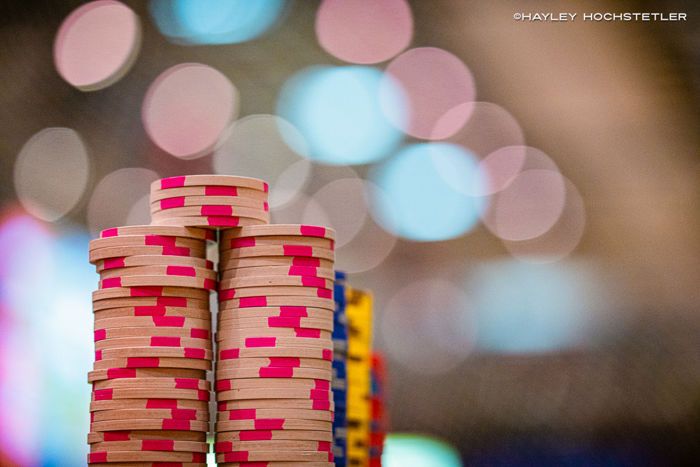
Keep in mind �� often in MTTs the amount of the buy-in and the payouts have a lot to do with the relative percentage of "players" and "non-players" on the bubble.
In low buy-in tournaments relatively few players will be as concerned about making the money and earning small min-cashes. Meanwhile in bigger buy-in events cashing might create a high number of "non-players" as cashing means that much more to them. When covering the WSOP Main Event (for example), we've actually seen a couple of rare instances of players folding pocket aces on the bubble out of fear of missing the money in such a prestigious event �� it's true!
2. Remain aware of stack sizes and relative risk
When discussing "Middle Stage Strategy" we emphasized how stack sizes begin to influence your approach to specific hands and situations. On the bubble, stack sizes are likewise of great importance as they directly affect the relative risk each player faces when choosing to enter a hand.
Big stacks need to be wary of other big stacks who have the potential to harm them should they get too heavily involved and build significant pots. Medium stacks can likewise cause significant damage to the big stacks, although they often can be more easily pressured �� e.g., folding to the big stacks' light three-bets or to postflop aggression with anything less than the top of their range.
With a big stack you can also accumulate significant chips if your table is not showing resistance to your preflop opens. If that's the case, widen your range and even raise from early position, if the raises keep getting through. Don't become too loose, though, and in fact tighten up your calling range when short stacks shove into you (including over your opening raises). If you've opened with min-raise from late position holding a trash hand and a player in the blinds three-bets all in for 10 BBs, there's no shame in folding and giving up those two BBs. Don't feel obligated to call and try to burst the bubble, either �� in fact, for you, keeping the bubble going is often going to be preferable, giving you still more chances to keep accumulating.
Medium stacks will want to be careful of the big stacks, of course, unless they seem to be among that category of "non-players" noted above (which happens). They can also pressure fellow medium stacks and short stacks, although they'll need to be more selective with their opens and less eager to put themselves into too many raise-fold situations preflop such as just described.
Having a medium stack means you can fold your way through the bubble period without suffering too great of a hit going forward, though try if you can not to turn into one of those "non-players" and let yourself be abused too readily. Often the players who aren't willing to keep "playing poker" with average chips on the bubble are ones who never go deep in tournaments, usually destined only to earn small cashes at best.
Even so, if you are medium-stacked and take too many "mini-stands" with loose preflop calls and blind defenses, you can also hurt your chances of doing much more once you've reached the money, so don't feel too bad about tightening up when it seems warranted.
Short stacks should always do what they can to estimate where they stand relative to other short stacks when the bubble arrives. This is generally easy to do when playing online poker tournaments via a quick glance at the lobby. In live tournaments �� especially those with large fields �� it can be a little more difficult to know with precision whether your eight BB stack is the shortest in the room or if there are four players with less.
Know that with 8-10 big blinds or more you aren't in "push-or-fold" mode just yet. Know also that with a stack that big (or a little bigger), you still possess some decent "fold equity" which means medium stacks and even big stacks aren't going to be that eager to call off when you open-raise. This means you can potentially open-raise profitably with a wider range than just the topmost premiums. Three-bet shoving can be more risky, though, and of course calling off your stack with less-than-premiums (e.g., weak aces, potentially-dominated hands like king-jack, queen-nine, etc.) is not recommended.
Get down to less than 5-6 big blinds and you are likely going to have to commit with less than the best starters. Understand your fold equity is going to be very low when you push a "micro" stack, meaning you'll likely be called and have to survive a showdown.
Against loose opponents, you'll still want an ace or king (or a pair, of course) as you'll stand to be a favorite versus most of their calling ranges. But against tight players you might be better off jamming with 9?8? than with K?9? or even A?5?, as their calling ranges will more likely dominate those weak ace- and king-hands as opposed to your having two "live" cards.
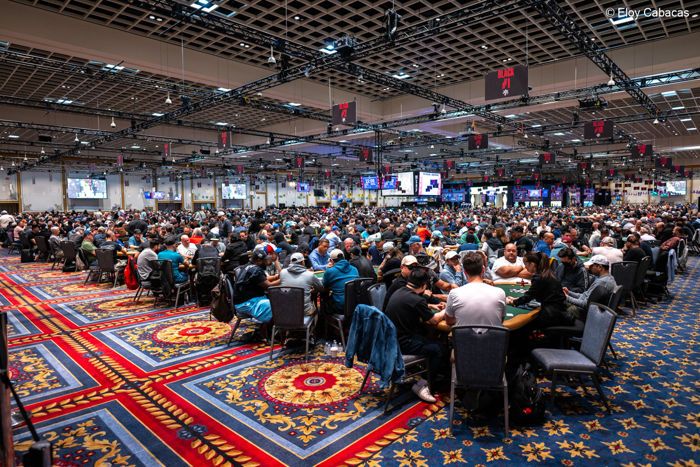
3. Stay away from passive play
As much of the above advice suggests, whatever your situation is with regard to the playing styles of your opponents or the size of your stack, being overly passive during the bubble �� that is, checking and calling a lot rather than betting and raising �� is a good way to hurt your chances either of going deep or making the money at all.
Passive play often isn't recommended poker strategy at any stage of a tournament, although when up against loose players it can be profitable to call them down with your good hands as they build pots and bluff off chips. However by the time the tournament reaches the bubble, chips become too valuable to risk them with too many calls, especially loose one.
Showing the initiative with preflop opens and three-bets and postflop leading bets often will serve you well on the bubble. That's because everyone's inclination to fold in response to aggression has increased, often even among the big stacks.
Conclusion
Pointing back to our earlier discussion of "Chip Accumulation vs. Survival" in multi-table tournaments, the bubble period is often one where those two approaches reveal themselves in extreme ways.
Most players understandably become very focused on survival with the money so near, with some even neglecting the importance of chip accumulation altogether. Meanwhile those who tend to perform better in the post-bubble period and late stage of the tournaments �� the ones who make final tables and win �� are often the ones who continue to think about accumulating chips by taking advantage of those who aren't.
As we talked about before, it's always important to balance your efforts to accumulate chips and to survive MTTs. Doing this well during the bubble can set you up nicely to make that deep run and make more than the minimum in tournaments.
Also in this series...
- Fast vs. Slow Structures
- The Importance of Stack Sizes
- Chip Accumulation vs. Survival
- How to Play the Early Levels
- Middle Stage Strategy
- Approaching the Bubble
- In the Money
- Going for the Win
- Bankroll Management for Poker MTTs
Ready to take a seat at the table? Put these multi-table tournament tips into practice at PokerStars.
In this Series
- 1 10 Multi-Table Tournament Tips: Fast vs. Slow Structures
- 2 10 Multi-Table Tournament Tips: The Importance of Stack Sizes
- 3 10 Multi-Table Tournament Tips: Chip Accumulation vs. Survival
- 4 10 Multi-Table Tournament Tips: How to Play the Early Levels
- 5 10 Multi-Table Tournament Tips: Middle Stage Strategy
- 6 10 Multi-Table Tournament Tips: Approaching the Bubble
- 7 10 Multi-Table Tournament Tips: Strategy on the Bubble
- 8 10 Multi-Table Tournament Tips: In the Money
- 9 10 Multi-Table Tournament Tips: Going for the Win
- 10 10 Multi-Table Tournament Tips: Bankroll Management

